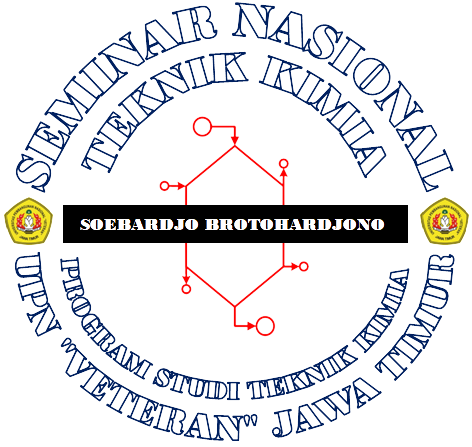Electrolyte Performance of Noni Fruit Extracts (Morinda Citrifolia L.) for C–Zn Batteries
Abstract
C–Zn battery is a commercial battery that widely used due to its easy to carry, inexpensive, and easy to obtain. However, the serious thing is the problem of battery waste which not only causes pollution but also endangers natural resources due to contained heavy metals (Mn) and corrosive electrolytes. Noni (Morinda Citrifolia L.) is a fruit with the main component of vitamin C (ascorbic acid) as an antioxidant. This acid component is the basis for further utilization as an environmentally friendly electrolyte application. Noni was fermented with 2 time variations, 48 and 72 hours. Fabrication of C–Zn batteries was done with thin configurations like sandwiches. Furthermore, voltage was measured with digital multimeter. The results obtained, Open Circuit Voltage (OCV) of 0.72 V for unfermented electrolytes. Then, the use of fermented electrolytes causes an increase in voltage and current due to decreased pH.
Keywords
Full Text:
DOWNLOAD PDFReferences
Addo, P. K., Arechederra, R. L., & Minteer, S. D. (2011). Towards a rechargeable alcohol biobattery, Journal of Power Sources, 196 (7): 3448–3451.
Akbar, S. A., Mardhiah, A., Saidi, N., & Lelifajri, L. (2017). Sintesis Dan Karakterisasi Polianilina (PANI) Dengan Variasi Doping Asam Kuat Menggunakan Metoda Elektrodeposisi, Prosiding Seminar Nasional USM (pp. 557–559). Aceh, Indonesia.
Akbar, S. A., Rochliadi, A., Suendo, V., Saidi, N., Lelifajri., & Mardhiah, A. (2018). A Raman Spectroscopy Study Of The Polyaniline Electrode On Zn-Polyaniline Rechargeable Batteries, Rasayan J. Chem, 11(4), 1525-1531.
Assi, R. A., Darwis, Y., Abdulbaqi, I. M., Khan, A. A., Vuanghao, L., & Laghari, M. H. (2017). Morinda citrifolia (Noni): A comprehensive review on its industrial uses, pharmacological activities, and clinical trials, Arabian Journal of Chemistry, 10 (5): 691–707.
Donaldson, L. (2018). Stretchable, twistable textile-based biobatteries become a reality, Materials Today, 21 (3): 200–201.
Fadilah, S., & Rahmawati, R. (2015). Pembuatan Biomaterial dari Limbah Kulit Pisang (Musa Paradisiaca). Prosiding Simposium Nasional Inovasi dan Pembelajaran Sains 2015 (SNIPS), Bandung, Indonesia. 45–48.
Fitriani, D. (2013). Pemanfaatan Limbah Kulit Pisang Sebagai Elektrolit Pada Sel Kering. Skripsi. Bandung: UIN Bandung.
Igharo, K. O. (2012). Construction of a primary Dry Cell Battery From Cassava Juice Extracts (The Cassava Battery Cell). Journal of Educational and Social Research, 2 (8): 18–23.
Jauharah, W. D. (2013). Analisis Kelistrikan yang Dihasilkan Limbah Buah dan Sayur sebagai Energi Alternatif Bio-baterai. Skripsi. Jember: Universitas Jember.
Jayashantha, N., Jayasuriya, K. D., & Wijesundera, R. P. (2012). Biodegradable Plantain Pith for Galvanic Cells. Proceedings of the Technical Sessions, Srilangka, 92–99.
Kuswandi, B., Pisesidharta, E., Budianto, H., Maisara, T., & Novita, N. (2011). Pemanfaatan Baterai Bekas Sebagai Elektroda Konduktansi Sederhana. Jurnal Ilmu Dasar, 2 (1): 34–40.
Pratiwa, C., Diba, F., & Wahdina. (2015). Bioaktivitas Ekstrak Etanol Buah Mengkudu (Morinda Citrifolia L.) Terhadap Rayap Tanah (Coptotermes Curvignathus Holmgren), Jurnal Hutan Lestari, 3 (2): 227–233.
Purnomo, H. (2010). Pengaruh Keasaman Buah Jeruk terhadap Konduktivitas Listrik, orbith, 6 (2): 276–281.
Rochliadi, A., Akbar, S. A., & Suendo, V. (2015). Polyaniline/Zn as secondary battery for electric vehicle base on energy return factor, Proceedings of the Joint International Conference on Electric Vehicular Technology and Industrial, Mechanical, Electrical and Chemical Engineering (ICEVT & IMECE) (pp. 353–358). Surakarta, Indonesia.
Tuurala, S., Kallio, T., Smolander, M., & Bergelin, M. (2015). Increasing performance and stability of mass-manufacturable biobatteries by ink modification, Sensing and Bio-Sensing Research, 4: 61–69.
Xiao, X., Conghaile, P. O., Leech, D., Ludwig, R., & Magner, E. (2017). An oxygen-independent and membrane-less glucose biobattery/supercapacitor hybrid device, Biosensors and Bioelectronics, 98: 421–427.
Zloczewska, A., & Niedziolka, M. J. (2013). Efficient air-breathing biocathodes for zinc/oxygen batteries, Journal of Power Sources, 228: 104–111.
Article Metrics
Abstract has been read : 1166 timesDOWNLOAD PDF file viewed/downloaded: 0 times
DOI: http://doi.org/10.25273/cheesa.v1i2.3390
Refbacks
- There are currently no refbacks.

This work is licensed under a Creative Commons Attribution-NonCommercial-ShareAlike 4.0 International License.



